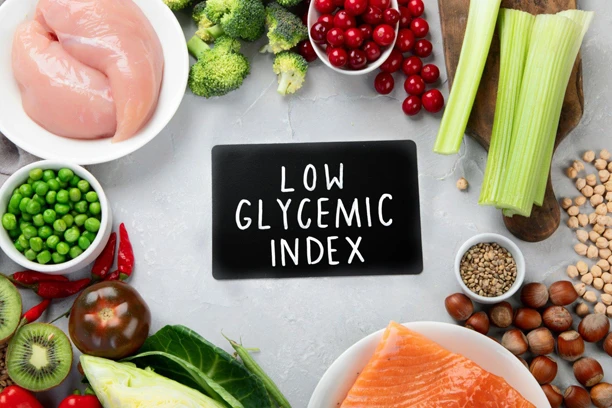A low-glycemic index (low-GI) diet is one that focuses on how foods affect blood sugar levels, also referred to as blood glucose levels. In this blog, you will learn 5 principles of low-glycemic index diet which can help you curate your diet plan.
Food is given a score on the glycemic index, which ranges from 0 to 100. Foods that have a minimal impact on blood sugar levels are found towards the bottom end of the scale. Foods with a significant impact on blood sugar levels are found on the high end of the spectrum.
The main tool for meal planning on a low-GI diet is the glycemic index. People can utilise a variety of techniques, like the glycemic index, to choose which foods and meals to eat.
Purpose
A low-GI diet aims to select foods that are less likely to boost blood sugar levels.
Why you might follow a low-GI diet
You might choose to follow a low-GI diet because of the following reasons:
- You want to maintain a healthy weight or lose weight
- You need assistance choosing and preparing healthier meals
- You require help managing your blood sugar levels as part of your diabetes treatment plan
- You want to reduce your risk of developing diabetes, heart disease, or blood vessel disorders
What does GI rating mean?
Foods are rated on a range of 0 to 100 and are divided into low, medium, and high glycaemic foods. The better the food, the lower the GI, and the less likely it is to alter your blood sugar levels.
GI ratings
- Low: 55 or less
- Medium: 56 to 69
- High: 70 or above
While foods with a low GI are rich in protein, fat, or fibre, foods with a high GI are more quickly digested and include higher levels of refined carbohydrates and sugar. The following foods do not have a GI rating: meat, fish, poultry, nuts, seeds, herbs, spices, and oils.
The degree of ripeness, the technique of cooking, the type of sugar present, and the amount of processing are other criteria taken into account when determining a food item’s GI rating.
5 principles of low-glycemic index diet
- Consume a lot of fruits and vegetables that are not starchy, including apples, pears, peaches, and berries. Even tropical fruits with a higher glycemic index than traditional sweets include bananas, mangoes, and papayas.
- Eat grains in their least processed form: “unbroken,” grains like whole-kernel bread, brown rice, and whole grains like millet, barley, and wheat berries; or traditionally processed grains like stone-ground bread, steel-cut oats, and unprocessed granola or muesli morning cereals.
- Minimize concentrated sweets—including high-calorie, low-glycemic-index meals like ice cream—occasional indulgences only. Limit your daily intake of fruit juice to no more than a half cup. Eliminate all sugar-sweetened beverages from your diet.
- Eat nutritious protein at most meals, such as beans, fish, or skinless chicken. Don’t skip breakfast, and have three meals and one to two snacks each day.
- Select foods containing healthy fats like olive oil, nuts (almonds, walnuts, and pecans), and avocados, but limit your intake to moderate amounts. Don’t consume too much saturated fat from dairy or other animal sources. Eliminate all partly hydrogenated fats (trans fats), which are included in many packaged foods and fast food.

